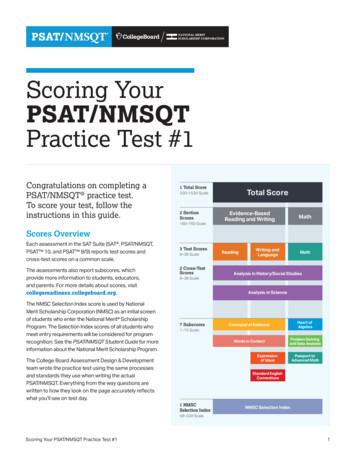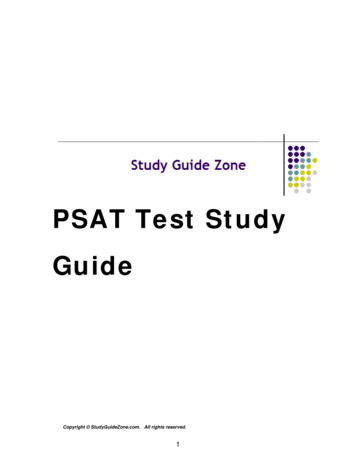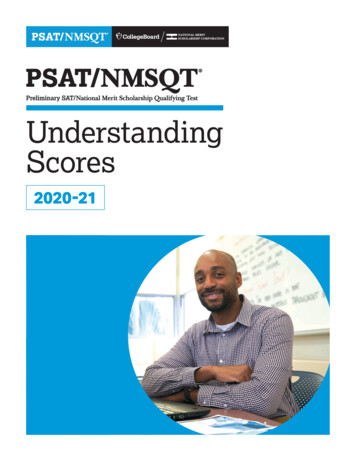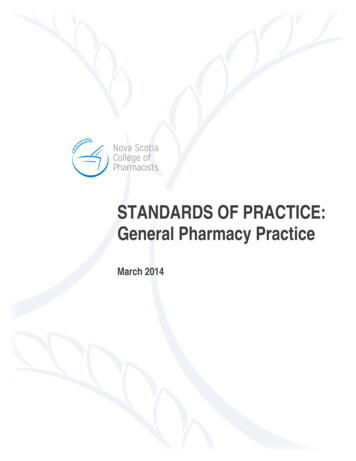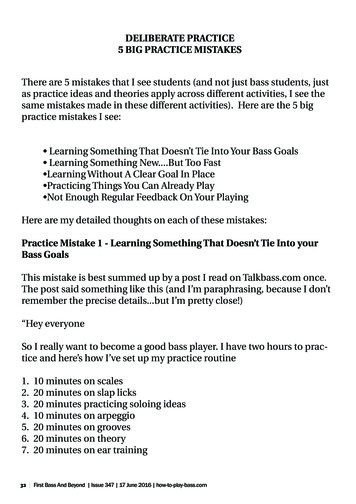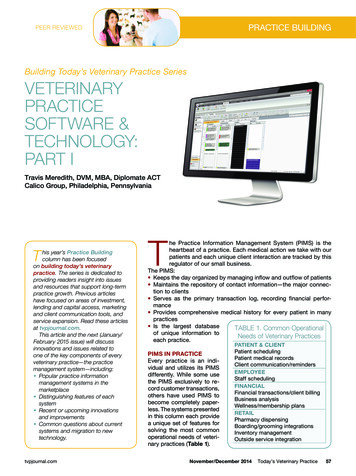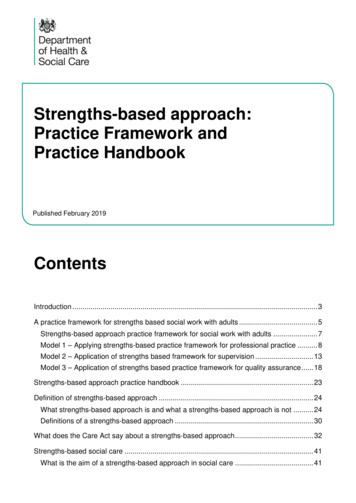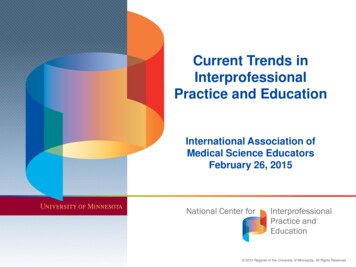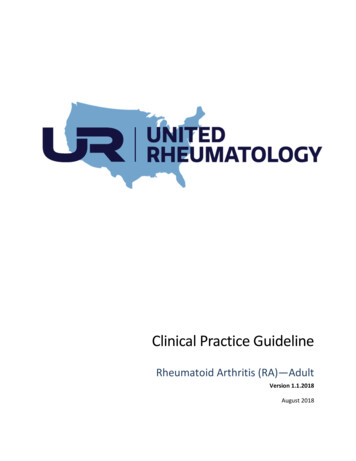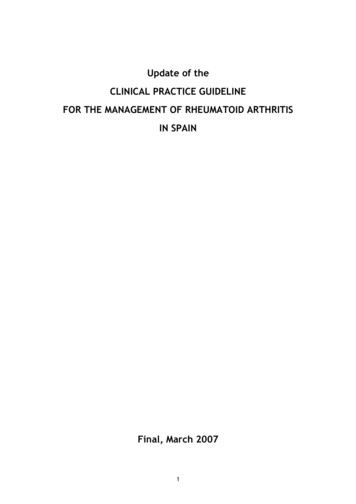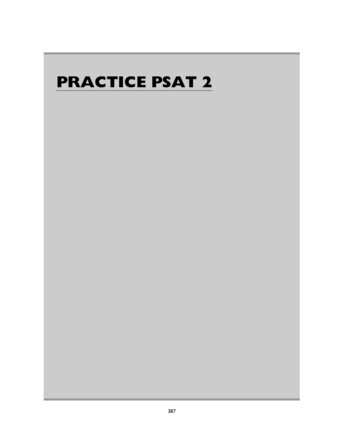
Transcription
PRACTICE PSAT 2387
CHAPTER 14 / PRACTICE PSAT 2389ANSWER SHEETLast Name:First Name:Date:Testing Location:Administering the Test Remove this answer sheet from the book and use it to record your answers to this test.This test will require 2 hours and 10 minutes to complete. Take this test in one sitting.Use a stopwatch to time yourself on each section. The time limit for each section is written clearly at thebeginning of each section. The first four sections are 25 minutes long, and the last section is 30 minutes long.Each response must completely fill the oval. Erase all stray marks completely, or they may be interpretedas responses.You must stop ALL work on a section when time is called.If you finish a section before the time has elapsed, check your work on that section. You may NOT move onto the next section until time is called.Do not waste time on questions that seem too difficult for you.Use the test book for scratchwork, but you will only receive credit for answers that are marked on the answersheets.Scoring the Test Your scaled score, which will be determined from a conversion table, is based on your raw score for eachsection.You will receive one point toward your raw score for every correct answer.You will receive no points toward your raw score for an omitted question.For each wrong answer on a multiple-choice question, your raw score will be reduced by 1/4 point. For eachwrong answer on a numerical “grid-in” question (Section 4, questions 29 –38), your raw score will receive nodeduction.
390MC GRAW-HILL’S PSAT/NMSQT
CHAPTER 14 / PRACTICE PSAT 2391Section 1ÆzTime—25 minutes124 Questions (1 –24)Each of the sentences below is missing one or two portions. Read each sentence. Then select the choicethat most logically completes the sentence, taking into account the meaning of the sentence as a whole.Example:Rather than accepting the theory unquestioningly, Deborah regarded it with - --- nceskepticismCorrect response: (E)B1The lawyer was - - - - - - in her crossexamination; her aggressive questioning continued for what seemed like ualreflectivestagnantA disaster was - - - - - - by the quick-thinkinghelmsman, who steered the ship away fromthe rocks that had - - - - - - emerged from theocean.(A)(B)(C)(D)(E)Bpredicted : : permanentlyforestalled : : reluctantlyaverted : : suddenlydispelled : : passivelyavoided : : serenelyUnlike our previous manager, who oftenmade sudden decisions without thinkingcarefully about them, the new one is farmore - - - - - - and sefulintolerantinexorableWhen spending long periods of time amongthe tribal peoples whose cultures they arestudying, - - - - - - should be careful not tointroduce harmful germs or disruptive technologies into those ornithologistsagronomistsanthropologistsThe - - - - - - decline in the price of the stockcaught many investors unprepared; theyhad expected its value to remain - - - - - - formany months, if not years.(A)(B)(C)(D)(E)unexpected : : volatilegradual : : lowimprovised : : uniformcumbersome : : liquidprecipitous : : stableGO ON TO THE NEXT PAGE Å Å Å
392MC GRAW-HILL’S PSAT/NMSQTB6Æz1B7Alicia’s - --- --- - performance in the companyplay astonished those who were familiar withher -- --- -- demeanor at work.10(A)(B)(C)(D)(E)15fearless : : intrepidemotional : : stolidinspiring : : meticulousstable : : attentiveamusing : : flippantIn an industry in which truthfulness is toooften an impediment to success, many salespeople have had to become masters of--- --- -- in order to advance their udeperseveranceconsumptionPassage 22025B8Gina considered her thousands of hours ofvolunteer work to be selfish rather than--- --- -; she simply enjoyed working withpeople and did not consider herself aparagon of - ---- --.(A)(B)(C)(D)(E)altruistic : : magnanimityegotistical : : placiditygenerous : : diversityreassuring : : distortiondesperate : : obsessionThe passages below are followed by questionsbased on their content and the relationshipbetween the passages. Answer each questionbased on what is stated or implied in thepassages.Questions 9– 12 are based on thefollowing passages.orange and tastes sweet. But we cannot knowthat it is edible and nutritious, or that itcontains vitamin C, which prevents scurvy,without a process of reasoning. Similarly, wedo not need reasons to believe that everytriangle has three angles. But we cannot knowthat the angles of a triangle add up to 1808without evidence or proof. The vast bulk ofhuman knowledge is based on reasoning.Indeed, our knowledge can be described as apyramid, in which what is directly evidentprovides the foundation on which all otherbeliefs are based.303540B9All people ever want from us in an argumentis agreement, and they do not care how they getit. Believing this leads to a very suspicious,critical, investigative attitude which is the firstrequirement of successful argumentation.Believe nothing. The less we believe, the lesslikely we are to believe something false. Whenarguing we always assume our opposers areboth sharp-minded and low-minded, so wenever underrate their ability. Since manyargument maneuvers are not made consciously,the simple fact that people are sincere does notmean we can trust their arguments (though wemight be able to trust them). They might thinktheir arguments are correct when they may befull of errors. And, some people who believe in aposition also believe that anything furtheringthe position is acceptable. This is the attitudethat “the end justifies the means.” But while theyare already convinced, we are not. We want thestraight goods, while they want to sell us a billof goods.Passage 1 suggests that knowledge can be“gained directly” (line 5 –6) through(A)(B)(C)(D)(E)instructioninstinctive reactionsreadingreasoningthe physical sensesPassage 1Line5Reasoning is a vital human activity. Forunlike some animals able to functioninstinctively, we need knowledge in order tosurvive. At the very least, knowledge facilitatesthe pursuit of happiness. Some knowledge canbe gained directly. In this way we know, forexample, that an object in front of us looksFirst paragraph: An Introduction to Logic, #1985 by Prentice-Hall,Inc. Reproduced courtesy of Pearson Education, Inc., UpperSaddle River, NJ.Second paragraph: How to Win an Argument, Michael A. Gilbert.# 1965 McGraw Hill, New York, p. 12GO ON TO THE NEXT PAGE Å Å Å
10B11The author of Passage 2 suggests that weshould have which of the following attitudestoward argumentation?The questions below are to be answered on the basisof what is stated or implied in the passages below orthe introductory material that precedes the passages.(A)(B)(C)(D)(E)Questions 13– 24 are based on thefollowing passages.delightskepticismavoidancehumortrustThe sentence beginning on line 29 [“Sincemany argument . . . to trust them”] assumesthat many of those who make arguments(A)(B)(C)(D)are not fully aware of their reasoningare not sincere about their positionsare too trusting of othersrely on manipulative strategies ofargumentation(E) do not have any formal training in logicalanalysisThe following passages discuss the moral andsocial value of capital punishment.Passage 1Line510B12The two passages differ in their perspectiveson belief in that Passage 1 regards it as(A) a necessary prerequisite of scientificreasoning, while Passage 2 regards it tobe exclusively in the domain of religiousthought(B) something that can be gained directly,while Passage 2 regards it as somethingunattainable(C) the ultimate goal of reasoning, whilePassage 2 claims it can be antitheticalto good argumentation(D) the result of an instinctual process, whilePassage 2 regards it as the result of a conscious process(E) something that people are trying toavoid, while Passage 2 regards it as something that everyone seeks1520253035Reverence for human life is part of the moralfoundation of a just society. The onlyjustification for causing death is to prevent thedeaths of others. Thus, individuals have theright to use deadly force to save their own livesfrom criminal aggressors, and countries havethe right to wage war to prevent their owndestruction. Likewise, a community can andshould use capital punishment to protect thelives of its members. Saint Thomas Aquinaswrote: “The slaying of an evildoer is lawfulinasmuch as it is directed to the welfare of thewhole community.”When judiciously applied as a punishmentfor the willful killing of innocents, the deathpenalty serves to deter those who would murderand to protect society from those who havemurdered. By reserving the ultimate penalty ofdeath for those who wantonly kill, we areclearly proclaiming our special reverence forlife. It is society’s ultimate means of selfdefense.The death of a criminal can certainly bejustified if it prevents the future deaths ofinnocent victims. Since death is the greatestpunishment a society can impose, it stands toreason that it is the most powerful way to deterthose who would commit a crime.Economist Isaac Ehrlich compared themurder rate in the United States with the rateof executions between 1933 and 1967. Hisconclusion: “The trade-off between theexecution of an offender and the lives ofpotential victims it might have saved was of theorder of magnitude of 1 for 8.” In other words,each use of the death penalty seems to havedeterred the killing of eight potential victims.Homicides decreased by almost 36 percentimmediately following a well-publicizedGO ON TO THE NEXT PAGE Å Å ÅÆB393zCHAPTER 14 / PRACTICE PSAT 21
39440Æz1455055606570MC GRAW-HILL’S PSAT/NMSQTexecution, according to the research ofsociologist David Phillips.The absence of a death threat encouragescrime. In 1950, when 82 criminals wereexecuted, there were 7,020 homicides. In 1980,after a decade of virtual abandonment of thedeath penalty, there were 22,958 homicides, a300 percent increase. As society became moreconcerned with the life of the criminal, lives ofinnocent victims became cheaper.Another value of the death penalty is onethat has been unfairly disparaged in thesofthearted modern era; punishment for thesake of doing justice. Some attack this notionby labelling it retribution, and argue that oursystem should seek only deterrence andrehabilitation. Deterrence is important, but it isa practical and utilitarian consideration ratherthan a moral and just one. Rehabilitation is aworthy ideal, but justice demands more.Without punishment for the sake ofpunishment, the age-old notion of justicefalters.One clear way we show our respect for life isto decree that those who unjustly take a lifeshould forfeit their own. The crime of murder isso horrendous, so irrevocable, that it demandsa commensurate punishment. Those whoblithely dismiss retribution as barbaric are theones who in fact demean the value of humanlife. As philosopher Ernest van den Haag says:“Life becomes cheaper as we become kinder tothose who wantonly take it.”95100105110115120B1375808590The first paragraph of Passage 1 suggests thatindividuals, communities, and countries(A)(B)(C)(D)(E)Passage 2Reverence for human life is part of the moralfoundation of a just society. That is why no onecan justly kill another; just as it is wrong for anindividual to do so, it is wrong for the state todo so.There is simply no convincing evidence thatexecutions deter potential murders. In thereams of studies on the issue, only one seriouswork, that of economist Isaac Ehrlich, showeda correlation, and his analysis was soundlyrefuted by investigations into his procedures.The most thorough research is that of ProfessorJ. Thorsten Sellin of the University ofPennsylvania, who compared the murder ratein similar communities that have and do nothave the death penalty. His conclusions:“Capital executions have no demonstrableeffect on homicide rates. Police are killed asfrequently in death penalty states as inabolitionist states . . . abolition or restoration ofthe death penalty has no demonstrable effect onthe rate of subsequent homicides.”There is no logical reason to believe thatcapital punishment will deter murder any moreeffectively than a life prison term will. Murderis an irrational act, often a crime of passion.Those who kill tend not to balance the possiblepenalties against their desires.The fact that capital punishment violatesour ideal of rehabilitation is even moreapparent, for the death penalty is absolute andirrevocable. It could permit the greatestinjustice of all, the murder of an innocentperson. Human beings are fallible, which is onereason they should not have power of life anddeath over each other. The number of murderconvictions that have been discovered to be inerror is a powerful argument against the deathpenalty.Fundamentally, the argument boils down tothe just role of the state. As part of the socialcontract, people surrender some of theirnatural rights to the state. But the state has noright to take an individual’s life, just as noindividual has that right over another. Mostmurders are committed for reasons ofvengeance. We should not legitimizemurderous vengeance by making it part of oursystem of justice.B14must categorically denounce violenceare using outdated theories of moralityeach have different prioritiesall have similar rights of self-protectiondo not adequately punish criminalsPassage 1 mentions Saint Thomas Aquinas asone who(A) denounces war(B) values the rights of individuals over thoseof society(C) supports the death penalty(D) was a former criminal(E) shares a common misconceptionBoth passages from Pro & Con: Capital Punishment, WalterIsaacson. #1983 Stonesong Press, pp. 67– 71GO ON TO THE NEXT PAGE Å Å Å
15According to Passage 1, a society can proclaimits “special reverence for life” (lines 20–21) byB19(A) abstaining from declarations of war(B) protec
Administering the Test Remove this answer sheet from the book and use it to record your answers to this test. This test will require 2 hours and 10 minutes to complete. Take this test in one sitting. Use a stopwatch to time yourself on each section. The time limit for each section is written clearly at the beginning of each section .
